Jupiter Artland: The spectacular sculpture park near Edinburgh you can't miss
Recently nominated for the prestigious Art Fund Museum of the Year award, Jupiter is open to the public half the year
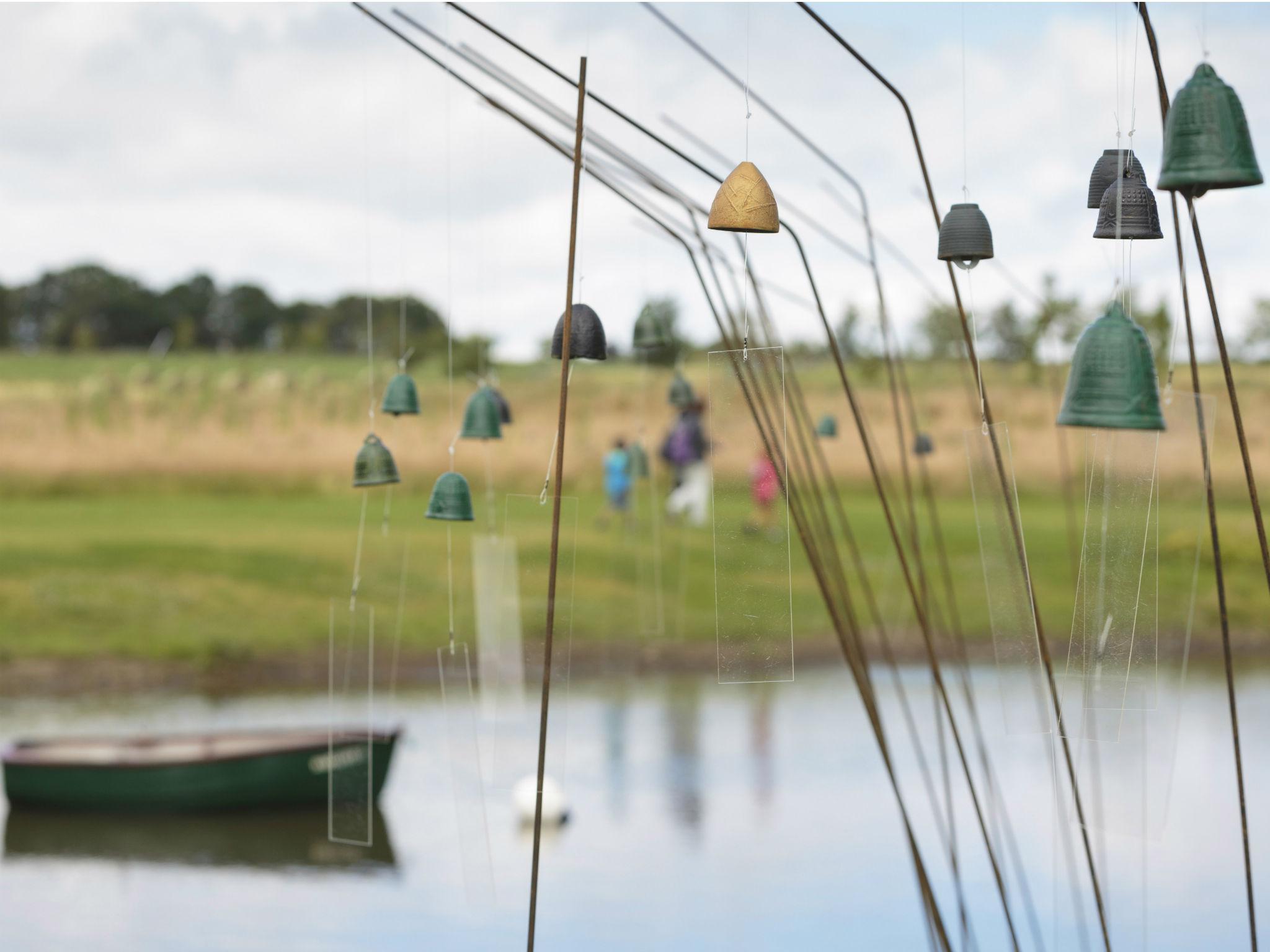
Your support helps us to tell the story
From reproductive rights to climate change to Big Tech, The Independent is on the ground when the story is developing. Whether it's investigating the financials of Elon Musk's pro-Trump PAC or producing our latest documentary, 'The A Word', which shines a light on the American women fighting for reproductive rights, we know how important it is to parse out the facts from the messaging.
At such a critical moment in US history, we need reporters on the ground. Your donation allows us to keep sending journalists to speak to both sides of the story.
The Independent is trusted by Americans across the entire political spectrum. And unlike many other quality news outlets, we choose not to lock Americans out of our reporting and analysis with paywalls. We believe quality journalism should be available to everyone, paid for by those who can afford it.
Your support makes all the difference.Jupiter Artland, the large sculpture park near Edinburgh open to the public half the year, is privately owned by Nicky and Robert Wilson.
So when world-renowned French artist Christian Boltanski warned them over dinner about the danger of ruining their land with sculpture, pointing at Marc Quinn’s Love Bomb, a 12m-high orchid, I inwardly quail but Nicky’s defence is both robust and enlightening.
“The Quinn was an important work for us. It was like planting a stake in the ground; a flag, perhaps, saying that we were serious and this was going to happen.”
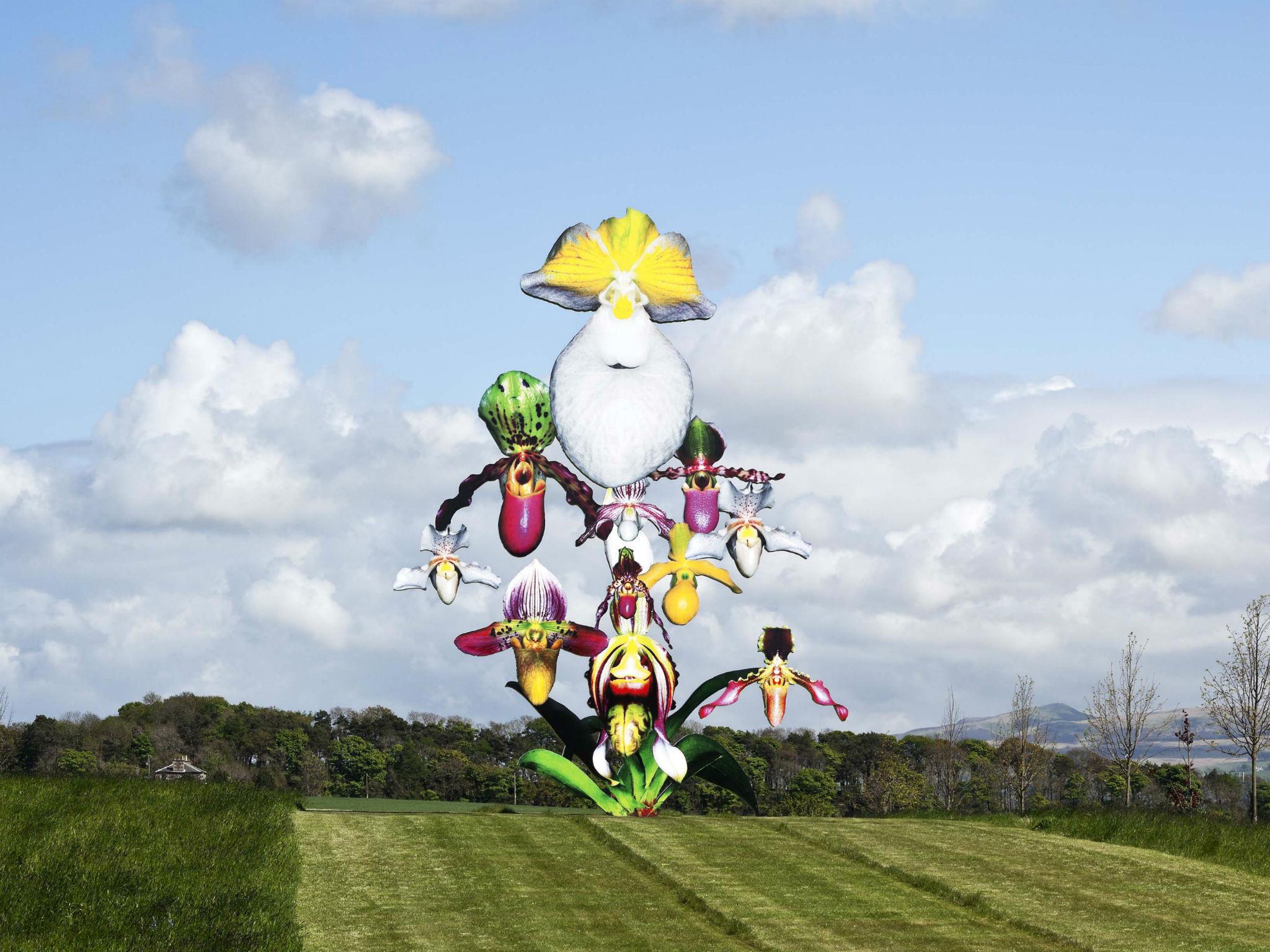
The newest permanent commission, and my favourite, is Animitas by Christian Boltanski, which sits on an island in the duck pond. Based on the constellation of stars mapping the sky the night Boltanski was born, 200 temple bells attached to low iron rebars move in the wind. They produce both an entrancing sound and flickering light as the sun reflects on the blank plastic prayer sheets. Their watery setting both protects them from the general public and adds another element of mystery. They are blank as they are commemorating not a specific death but all the dead.
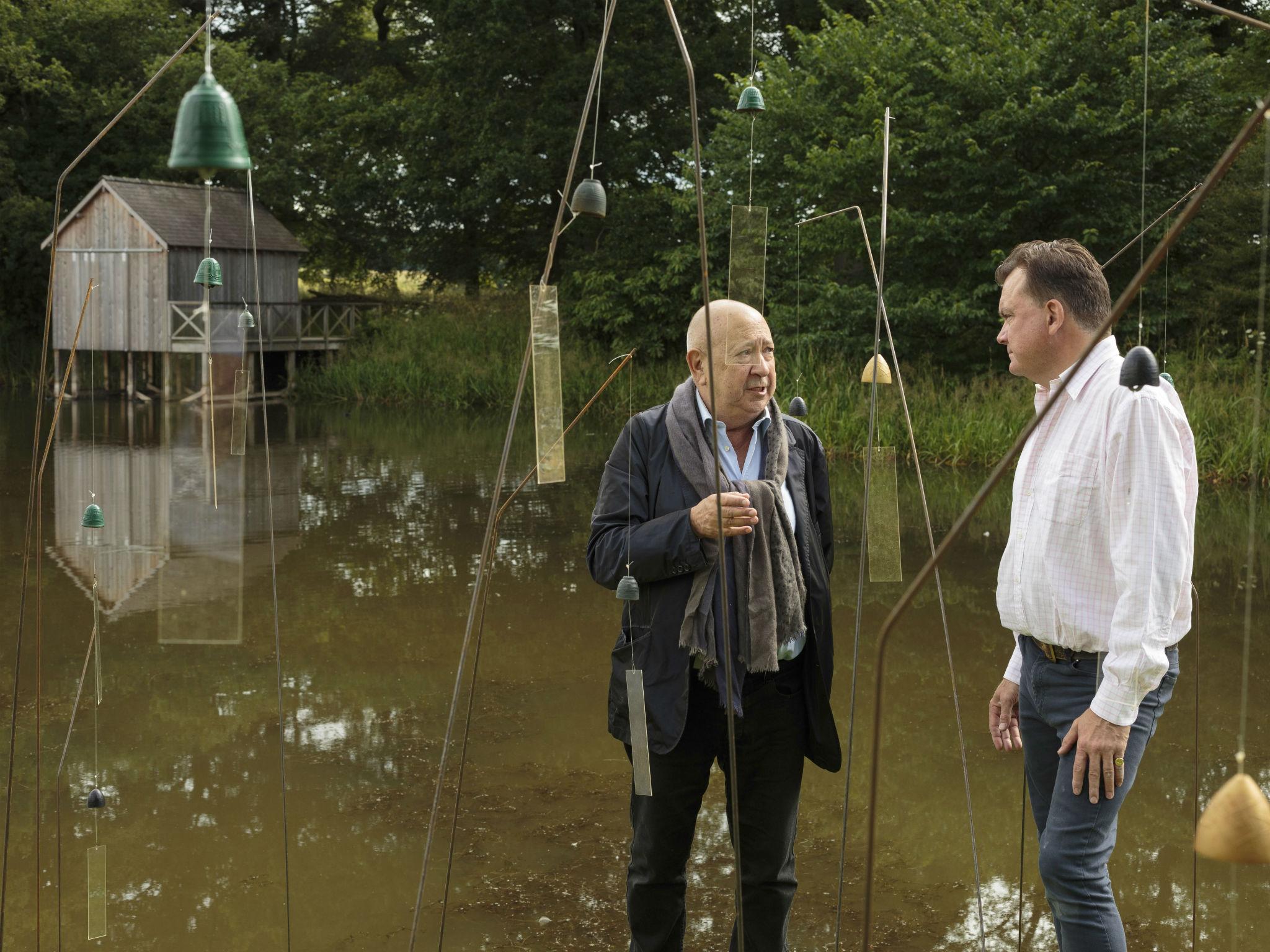
Boltanski has been on Nicky Wilson’s shopping list for a long time, ever since she saw his show at the Whitechapel in London in 1990. He is a dark artist to introduce to the park but the Wilsons are not afraid of the dark. Nathan Coley’s In Memory and Laura Ford’s weeping girls add additional sinister notes. Boltanski says “my trauma is when I was young I heard the story of the ‘shoah’” (the Hebrew word for holocaust). Born in 1944 in Paris into a family with a Corsican Catholic mother and a Russian Jewish family, his father hid in the basement of the family home in Paris. When his father eventually could leave he would not venture out alone.
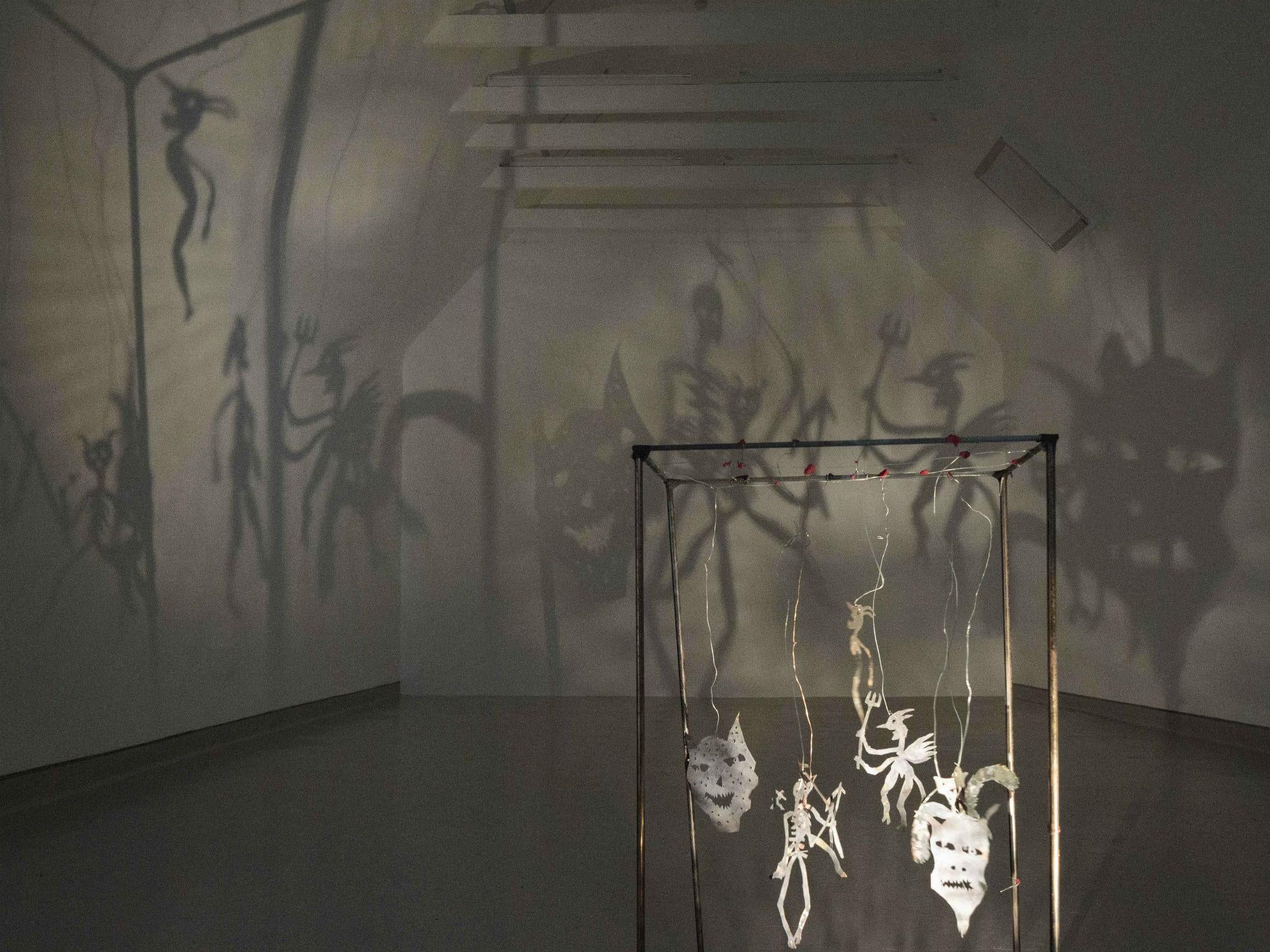
Boltanski left school when he was 14 as it frightened him and he was “a bit mad”, while his two older brothers obediently stayed in education, attended university and got high grades. (He now says: “I call one of them Wikipedia as he can tell me anything I need to know about everything”.) He sees himself as the failure in his parents’ eyes as he refused to study. “They were good to me though,” he says. “When I was 14 I wanted to be a painter so they bought me a large piece of wood. I was a bit crazy at the time but ultimately it was art that saved me.” It is ironic that he became the famous one of the three brothers with work in various art destinations, including Documenta, as well as the French pavilion in the Venice Biennial and winning the most prestigious art prize, the Japanese Praemium Imperiale.
He is surprisingly playful considering his usual subject matter. Cherubic and round-faced, he is quick to make memorable statements, such as: “I am Boltanski from Malakoff”. Malakoff sounds exotic but is actually a part of Paris that is only 10 minutes from Montparnasse. “I use the excuse of distance when I do not want to see anyone,” he chuckles, “I say Malakoff is so far”. He is married to French artist Annette Messager and they share a modernist block, complete with a beautiful garden, with artist Sophie Caille; three hugely successful artists all of whom have had the French Pavilion in the Venice Biennial at different times.
Boltanski has made many great works but perhaps none so memorable as those composed of biscuit tins that acted as walls of containment as in Monumenta. Dead Swiss is composed of quasi toppling piles of these tins that make the viewer feel in peril and remind us that, as Boltanski says, “death could be only 10 minutes away".
Animitas is purposefully designed to be at one with nature. It takes its name from the frequent makeshift shrines he saw in Chile by the side of the road commemorating people killed in road accidents. The first version of the work was in the remote northern desert in Chile – too remote to be seen by many and probably now destroyed, although preserved for posterity by a webcam recording of the work. He is pleased, he tells me, to be positioned at Jupiter near Andy Goldsworthy’s Stone Coppice as Goldsworthy works “simply” within nature. On the opening day a visitor says to me: “I do not know about the artist but the work makes me cry.” When I later tell Boltanski this, he laughs but then admits he feels touched by this as “each person has to take what he needs to finish the work”.
Recently Boltanski has spent a lot of time in Japan. He has installed Les Archives du Coeur in the Teshima museum. Collecting heartbeats at various locations over the past few years (there is a collecting machine here at Jupiter) there is now an archive of approaching 100,000 human heartbeats and one dog. “Mr Fukutake [the owner] has a dog, so we allowed it”. When you visit Teshima you can access your own heartbeat, or that of someone you know or simply listen to a continual heartbeat. To get to the remote island you have to take a small boat trip: “it is more about the journey than the arrival. Many of the people there are already dead, but then we will all be dead one day”. He warns people that when someone makes the pilgrimage there to hear the heartbeat of a dead relative, “you feel more absence than presence”.
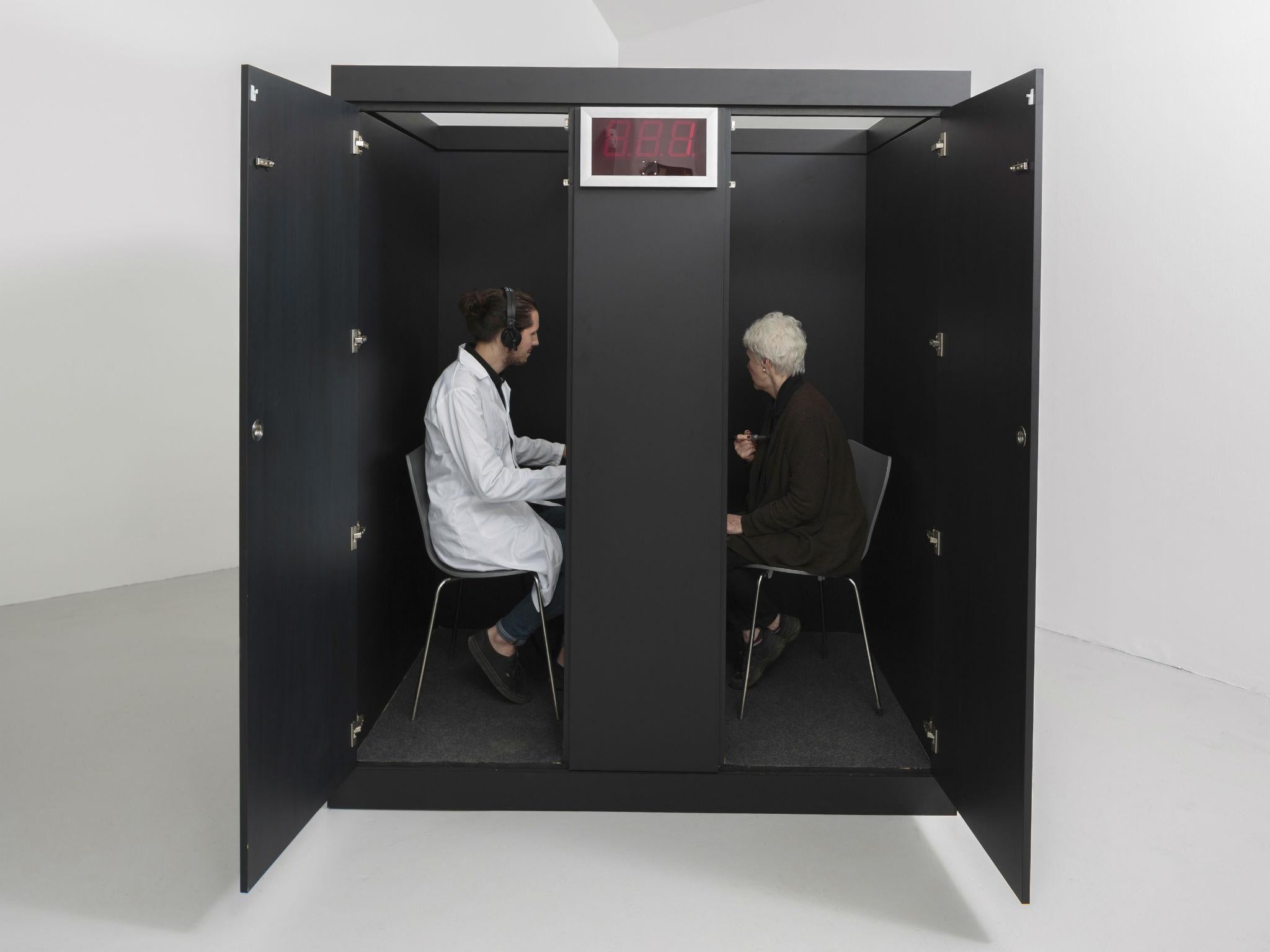
Alongside the established permanent commissions at Jupiter there is also an emerging artist programme designed to encourage younger artists to “take their work outside”. This year French artist Caroline Mesquita has produced Cream Sacrifice, composed of five lifesize elements. The commission “gave me the funds to experiment with new materials. Most of the time you are focused on making works for an exhibition or an art fair; for the first time I had the time to try different things”.
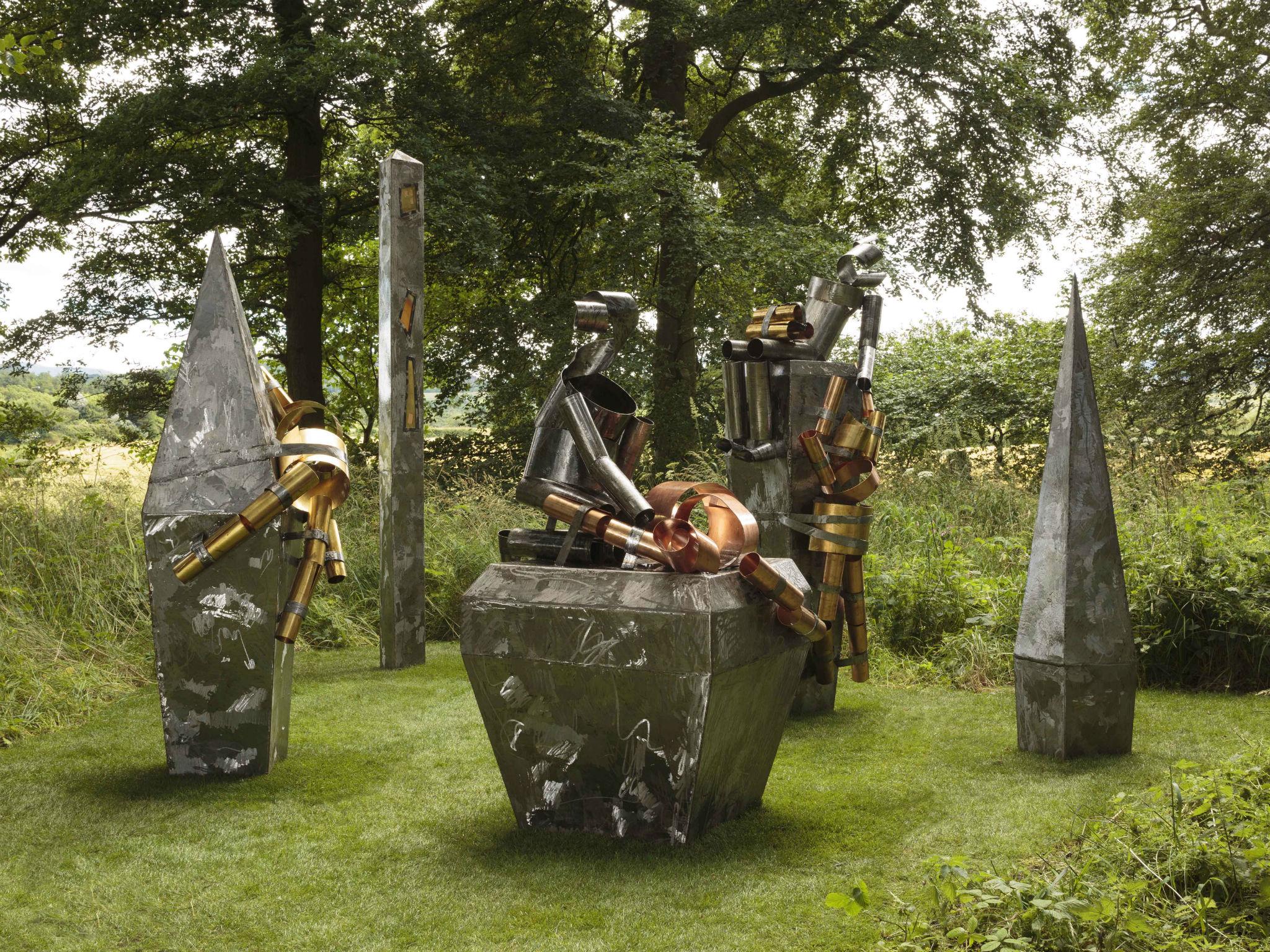
Although much of Jupiter is outside, there is also a café and a group of internal spaces including the Tin Roof gallery, inhabited this year by Glasgwegian artist Hayley Tompkins. She has never worked outside before and, when she visited the site, wanted to do something to relate to the complicated internal space. Tompkins tells me that the external work, the highly coloured painted roof – strangely echoing the colours and purpose of intent of Marc Quinn’s orchid – took five days with one assistant.
Recently Jupiter was nominated for the prestigious Art Fund Museum of the Year award, eventually losing to the Victoria and Albert Museum. I was incensed at the time, particularly as the V&A had not initiated the Alexander McQueen exhibition, which was quoted as one of the reasons it had won. When I talk to Nicky about the loss, she is pragmatic. “We were not ready yet – and we have loads to do moving forward.”
Having been lucky enough to share in their hospitality in their private residence Bonnington House, with Boltanski, Mesquita and Tompkins, I can see Wilson’s singular vision stamped clearly. From the motivated group of volunteers, to their programme of apprenticeship for gardeners, to workshops for children and, last but not least, to the inspired idea of making every child in Scotland a member of Jupiter, if not by physically getting them in a bus then virtually, their attention to detail and determination is palpable. And excuse me Jupiter Artland if I leave the parting quotation to Boltanski. “People often say you look like your art, so Giacometti looks like a Giacometti sculpture and Francis Bacon looks like a Francis Bacon painting and I, Christian Boltanski, look like a biscuit box ... If I die tomorrow I would like it to be said – ah, Boltanski, he was too old to journey to the desert or to Japan but I can not die until after 2020 as I have an important exhibition to make.”
Jupiter Artland is open until 25 September www.jupiterartland.org. The exhibitions by Christian Boltanski, Caroline Mesquita and Hayley Tompkins are part of Edinburgh Art Festival 2016
Join our commenting forum
Join thought-provoking conversations, follow other Independent readers and see their replies
Comments